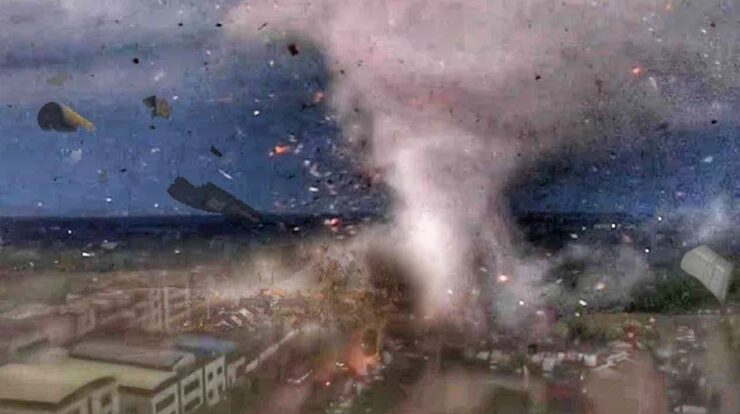
Tornadoes in Nebraska today are a force to be reckoned with. This article delves into the meteorological conditions that contribute to their formation, the patterns of their movement, and the areas of Nebraska most at risk. We’ll also explore the history of tornadoes in the state, the current preparedness and response measures in place, and the latest research and forecasting efforts.
From understanding the science behind tornadoes to learning how to stay safe during one, this article provides a comprehensive overview of this captivating weather phenomenon.
Tornadoes in Nebraska Today
Nebraska, located in the central United States, is known for its severe weather, including tornadoes. The state experiences an average of 55 tornadoes per year, more than any other state in the country. Tornadoes can cause widespread damage and loss of life, making it crucial for residents to be aware of the risks and take appropriate precautions.
Tornado Formation and Patterns in Nebraska
Tornadoes form when warm, moist air from the Gulf of Mexico meets cold, dry air from the Rocky Mountains. This creates a rotating column of air that can extend from the ground to the clouds. Tornadoes can occur at any time of year, but they are most common in the spring and summer months.
Nebraska is located in Tornado Alley, a region of the United States that experiences a high frequency of tornadoes. The state’s flat terrain and lack of natural barriers allow tornadoes to travel long distances with little obstruction.
The most common type of tornado in Nebraska is the supercell tornado. Supercell tornadoes are large and powerful, and they can produce winds of up to 300 miles per hour. These tornadoes can cause significant damage and loss of life.
Historical Tornado Events in Nebraska
Nebraska has experienced a number of significant tornado events throughout its history. Some of the most notable tornadoes include:
- The Hallam tornado of 1980 was an F4 tornado that killed 10 people and injured 100. The tornado destroyed 90% of the town of Hallam.
- The Omaha tornado of 1975 was an F5 tornado that killed 3 people and injured 130. The tornado caused $250 million in damage.
- The Pilger tornado of 2014 was an F4 tornado that killed 1 person and injured 19. The tornado destroyed 100 homes and businesses.
These tornadoes are a reminder of the devastating power of tornadoes and the importance of being prepared.
Current Tornado Preparedness and Response in Nebraska, Tornadoes in nebraska today
Nebraska has a comprehensive tornado preparedness and response plan in place. The plan includes:
- A statewide tornado warning system
- A network of local emergency management agencies
- A public education and outreach program
The tornado warning system is designed to provide residents with as much advance warning as possible of an approaching tornado. The system uses a combination of radar, spotters, and other technologies to track tornadoes and issue warnings.
Local emergency management agencies are responsible for coordinating the response to tornadoes in their communities. These agencies work with law enforcement, fire departments, and other emergency responders to provide assistance to victims and to protect property.
The public education and outreach program is designed to increase awareness of tornadoes and to promote safety. The program includes a variety of activities, such as school presentations, community meetings, and media campaigns.
Tornado Safety and Mitigation Measures
There are a number of things that residents can do to stay safe during a tornado:
- Have a tornado safety plan
- Practice tornado drills
- Know where to go for shelter
- Stay informed about the weather forecast
A tornado safety plan should include a designated safe place to go in the event of a tornado warning. This place should be a sturdy building with a basement or interior room. Residents should also practice tornado drills so that they know what to do in the event of a tornado warning.
Staying informed about the weather forecast is also important. Residents should listen to local weather forecasts and be aware of any tornado watches or warnings that are issued.
Tornado Research and Forecasting
There is a great deal of research being done to improve tornado prediction and forecasting. Scientists are working to develop new technologies that can detect tornadoes earlier and provide more accurate warnings. They are also working to improve our understanding of the factors that contribute to tornado formation.
The research being done on tornadoes is helping to improve our ability to predict and forecast these storms. This research is also helping us to develop new ways to mitigate the effects of tornadoes and to keep people safe.
Closing Summary

Tornadoes in Nebraska today are a reminder of the power of nature and the importance of being prepared. By understanding the risks, taking precautions, and staying informed, we can minimize the impact of these storms and protect our communities.
Question & Answer Hub
What are the most common types of tornadoes in Nebraska?
The most common types of tornadoes in Nebraska are weak tornadoes (EF0-EF1), which typically have wind speeds of less than 110 mph and cause minor damage. However, stronger tornadoes (EF2-EF5) can occur, especially during severe weather outbreaks.
What should I do if I see a tornado?
If you see a tornado, take shelter immediately in a sturdy building or underground. Stay away from windows and doors, and if possible, go to the lowest level of the building. If you are outside, lie flat in a ditch or other low-lying area and cover your head with your hands.
How can I stay informed about tornadoes?
You can stay informed about tornadoes by listening to local weather forecasts, signing up for weather alerts, and following the National Weather Service on social media. You can also download the NWS Tornado app for real-time updates on tornado warnings and watches.





